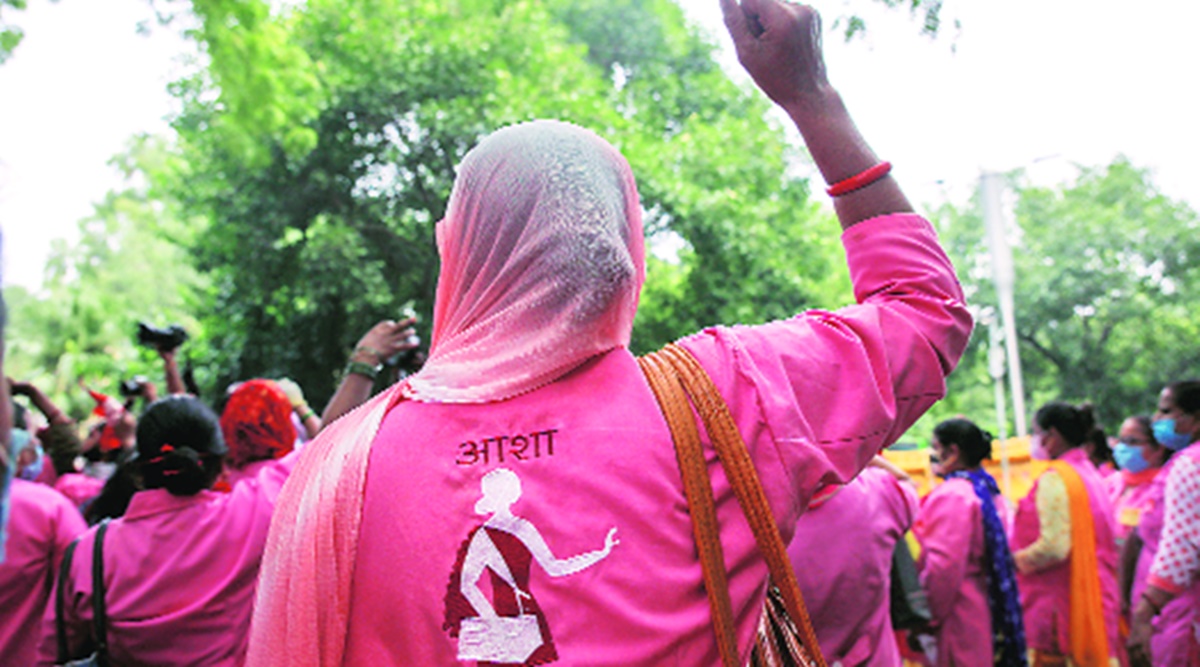 Under this project, over 2,000 ASHA workers were trained for early detection of infants who would require immediate medical attention. (File)
Under this project, over 2,000 ASHA workers were trained for early detection of infants who would require immediate medical attention. (File)THIS YEAR, Gadchiroli has recorded its lowest-ever Infant Mortality Rate (IMR) at 17.28 per cent. It has also come as a personal victory for the tribal-dominated district’s Chief Executive Officer Kumar Ashirvad. When he took over as the CEO in 2019, the IMR was 23.10 per cent, and despite his best efforts, with several maternal, and prenatal schemes, it continued to remain above the 20 per cent-mark.
What eventually worked in Gadchiroli was Palavi, a project initiated this year that is saving lives of several infants in Naxal-affected regions where providing health accessibility is an uphill task.
IMR is an important indicator that measures the overall well-being of a country. Gadchiroli recorded one of the highest IMR among the 36 districts in Maharashtra. In 2020 alone, it recorded 222 deaths till September, of which 78 were recorded at home, with an IMR of 22.40—much higher than the state’s average of 16 per cent.
For the first time, six teams were formed to audit the deaths, to analyse reasons behind them. The teams used a reversed tracking method of all infant deaths at home and institution. “In the death audit, health workers, Accredited Social Health Activist (ASHA), anganwadi workers, relatives, pujari, sarpanch were interviewed to understand what caused the death— was it wrong treatment, delay, or misdiagnosis,” said Dr Vinod Mhashakhetri, additional district health officer, Gadchiroli.
The results of the audit revealed that most of the infants were dying due to preventable diseases such as Sepsis–a blood infection that occurs in an infant —which is the most common cause of death (31 per cent). This is followed by preterm (13 per cent), and pneumonia (9 per cent). They realised that there are unidentified loopholes in the existing system which are contributing to the high IMR.
“We realised that ASHA workers who lacked practical knowledge failed to identify newborn babies with health complications which delayed treatment, leading to death,” said Dr Mhashakhetri. “The health kits given to ASHA workers have all the required tools for diagnosis, but they don’t know how to use them,” he added.
This led to the rollout of the Palavi project with an intent to focus only on infants delivered at home. Under this project, over 2,000 ASHA workers were trained for early detection of infants who would require immediate medical attention. “Nearly, 40 per cent of the deaths are reported at homes. So, we thought of first saving the lives of these 70-80 infants by providing adequate training to ASHA workers,” said CEO Ashirvad.
‘Palavi’ is a combination of abbreviation in Marathi—PA stands for ‘All types of training to all to create wisdom’; LA stands for ‘Identifying the danger signs and immediate referral’ and PA refers to ‘Regular follow ups’.
With this initiative, they’ve been able to save more infants than ever. For instance, in 2021, out of 18,978 births, there were 357 infant deaths with IMR at 18.81. This year till September, 8,158 live births were recorded with 141 infant deaths, bringing the IMR to 17.28 per cent.
“This is the lowest IMR the district has recorded. We have been able to achieve this due to early detection,” Ashirvad said.
Along with that, the Neonatal mortality rate (NMR), which refers to deaths among live births during the first 28 days, has also dropped. In 2021-22, the NMR was 14.20 per cent with 266 neonatal deaths. This year, between April and September, it has slightly dropped to 13.12 per cent with 107 neonatal deaths.
A mobile application will monitor the efficiency of ASHA workers, primarily health centres, and rural hospitals for auditing of infant deaths in the district. “We would keep a track of all ASHA workers, doctors, and nurses to check how they are treating the infants and if the latter are getting the required treatment on time,” said Dr Mhashakhetri. “According to their performances, they would be given ratings,” he added.